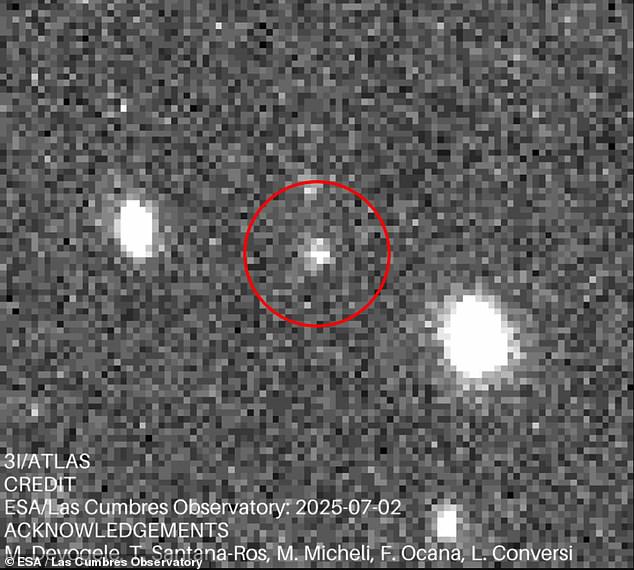
Mysterious Interstellar Object Hurtling Through Solar System Sparks Alien Spacecraft Speculation
Mysterious Interstellar Object 3I/ATLAS Hurtles Toward the Sun
(Captured for the first time by ESA, scientists debate its origins)
[Image: ESA’s video still of 3I/ATLAS, showing a bright streak against a starry backdrop. Caption: The interstellar object 3I/ATLAS, imaged by ESA’s telescope in Hawaii, glows brightly as it speeds through the solar system.]
NASA detected an enigmatic interstellar object, 3I/ATLAS, on July 1, marking only the third time such a visitor from another star system has been observed. Spanning 12 miles (20 km) and racing toward the sun at 135,000 mph, the European Space Agency (ESA) captured its first video via a high-powered telescope in Hawaii. The footage reveals an unusually bright object, either massive in size or emitting light—a trait scientists largely attribute to a glowing “coma” of gas and ice, confirming it as an active comet.
Alien Craft Theory Sparks Debate
Harvard physicist Avi Loeb, known for controversial claims about interstellar objects, suggests 3I/ATLAS might have a “non-natural origin.” He told MailOnline, “If it’s not a comet, its brightness could signal artificial light.” Most experts dismiss this, citing the coma as clear evidence of outgassing—a hallmark of comets. NASA and ESA confirm its icy composition, with sunlight vaporizing its surface to create the luminous haze.
[Image: Trajectory graph comparing 3I/ATLAS’s path to Mars’ orbit. Caption: NASA predicts 3I/ATLAS will swing closest to the sun on October 30, passing within Mars’ orbital path (130 million miles from Earth).]
Journey Through the Solar System
Detected initially as a faint speck by NASA’s ATLAS telescope, astronomers worldwide scrambled to track the object. Older data revealed 3I/ATLAS’s path originated beyond our solar system, likely ejected by a distant star. By late October, it will approach within 130 million miles of the sun before retreating into deep space. At its nearest point to Earth in December, it will still linger 150 million miles away—posing no threat.
A Rare Interstellar Visitor
Only two previous interstellar objects have been documented: the controversial ‘Oumuamua (2017) and Comet Borisov (2019). ‘Oumuamua’s odd acceleration and shape once led Loeb to propose it might be alien technology. While 3I/ATLAS shares similarities, scientists emphasize its coma solidifies its identity as a comet. Dr. Mark Norris, an astronomer, explains: “Outgassing defines comets. As it nears the sun, 3I/ATLAS’s coma will expand, offering more study opportunities.”
[Image: Side-by-side images of ‘Oumuamua (left) and 3I/ATLAS (right). Caption: ‘Oumuamua’s mysterious 2017 flyby fueled alien speculation. 3I/ATLAS, with clear comet traits, may resolve debates about interstellar visitors.]
Alien Hypothesis: Unlikely but Intriguing
Despite mainstream dismissal, curiosity persists. Professor Michael Garrett of Jodrell Bank Observatory acknowledges, “We should test all hypotheses. Each interstellar object teaches us about galaxy formation.” However, 3I/ATLAS’s coma and trajectory align with natural origins—a wandering icy body ejected from a foreign star system.
As the comet dips behind the sun in late 2024, astronomers await its reemerging phase for deeper analysis. Until then, 3I/ATLAS continues its silent voyage—a cosmic messenger bridging star systems.
[Image: Artist’s rendering of a comet’s coma. Caption: 3I/ATLAS’s glowing coma, created by sublimating ice, confirms its identity as a comet. Such features help distinguish natural objects from speculative alien tech.]
Conclusion
While the allure of alien technology captures imaginations, evidence overwhelmingly labels 3I/ATLAS a comet. Its passage offers a rare glimpse into materials from another star, enriching our understanding of the cosmos. As Loeb quips, “The universe keeps surprising us”—but for now, science leans toward the sublime, not the extraterrestrial.
(Word count: ~600)


